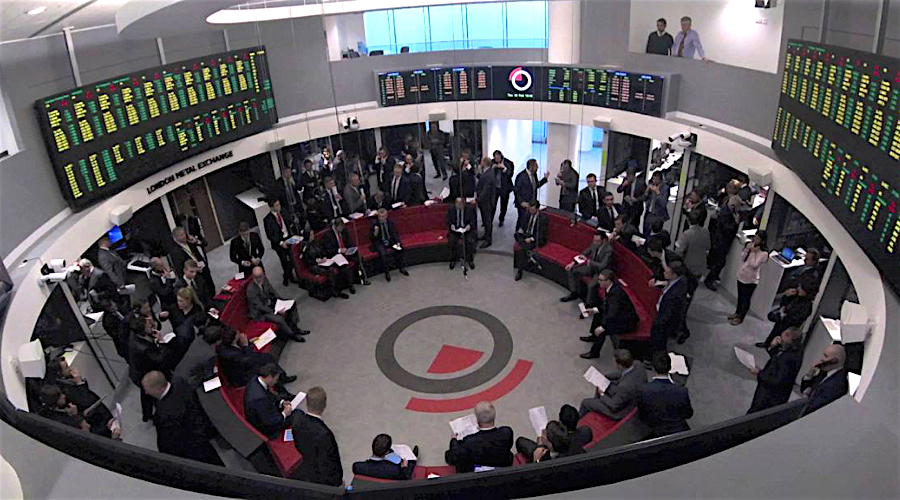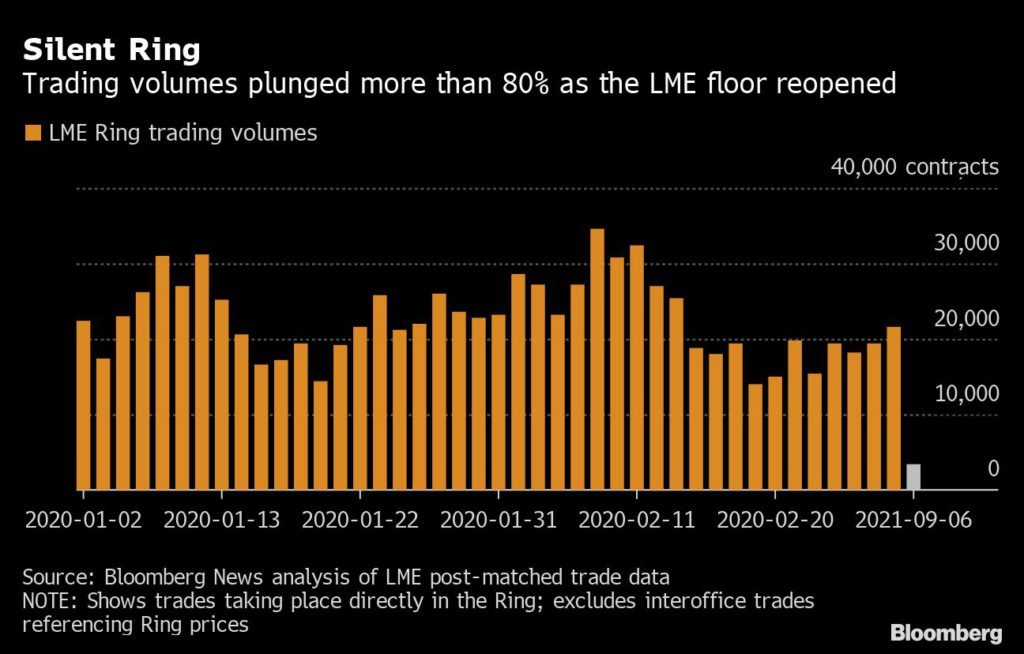LME floor trade volume plunged 85% on reopening day

Volumes on the London Metal Exchange’s open-outcry floor dropped 85% from pre-pandemic levels on traders’ first day back in “the Ring,” pointing to an even sharper contraction than some had predicted and reinforcing concerns that it may not stay open for long.
The iconic trading floor reopened this week after dealers lobbied the LME not to push ahead with a plan to switch permanently to fully electronic pricing. However, the restart came with a compromise that reduced the floor traders’ role in setting daily prices.
While the Ring’s raucous shouting matches are once again being used to produce “official” benchmark prices used by physical metal buyers, the exchange announced in June that daily closing prices will be set on-screen, as they have been for the past 18 months.
While the exchange has sought to placate both sides in developing its hybrid pricing solution, the debate over how long the Ring can survive is far from over
Supporters of the Ring will be reassured by an increase in trading activity in the pricing sessions that have returned to the floor, which signals that the industrial users that have long relied on it are eager to return.
But brokers warned even before Monday that the change could lead to a sharp drop, meaning it’s no longer viable to maintain Ring-dealing businesses. The head of one floor-dealing team had said he was bracing for a 75% drop in volumes, but Bloomberg’s analysis of trading data for Monday suggests the reality may be even worse.
“Obviously there has been a big drop in headline total floor volume from pre-pandemic levels, reflecting the restructured LME,” said Kevin Tuohy, co-head of metals at Ring-dealing firm StoneX Group. “But it’s worth noting that this volume still exists, it has simply been transferred to the electronic platform for some of the trading sessions.”

Ring-dealing volumes across all metals totaled 3,493 contracts on Monday, down 85% from the average daily total during the final full two months of trading before the Ring was suspended last year, according to calculations based on trading data published by the LME. A spokeswoman for the bourse confirmed the daily total, but added that volumes in the official pricing session had risen significantly from a pre-pandemic average. Trading in the bourse’s benchmark cash contracts rose 71% to 790 lots, she said.
“It’s early days, but so far this week we have seen a notable increase in volumes around the official prices,” StoneX’s Tuohy said. “That would seem to confirm the industry’s ongoing requirement for an efficient, liquid and transparent hedging medium.”
The LME’s consultation over the Ring’s future has brought its valued role in the industry into sharp focus, while also stoking criticism from some who say its closure is long past due.
While the exchange has sought to placate both sides in developing its hybrid pricing solution, the debate over how long the Ring can survive is far from over. One major dealer has already quit, leaving eight remaining, while StoneX — one of the most vocal proponents in the fight to save the Ring — cut staff on the floor by about a third in preparation for more muted trading activity.
“I don’t think we can sit here and say we expect volumes to be the same, because we’ve made a decision that means that probably won’t happen,” LME Chief Executive Matthew Chamberlain said by phone. “I really feel it can be made to work, but ultimately I can’t sit here and judge that; that has to be a question for the dealers.”
(By Mark Burton)
More News
{{ commodity.name }}
{{ post.title }}
{{ post.date }}

Comments